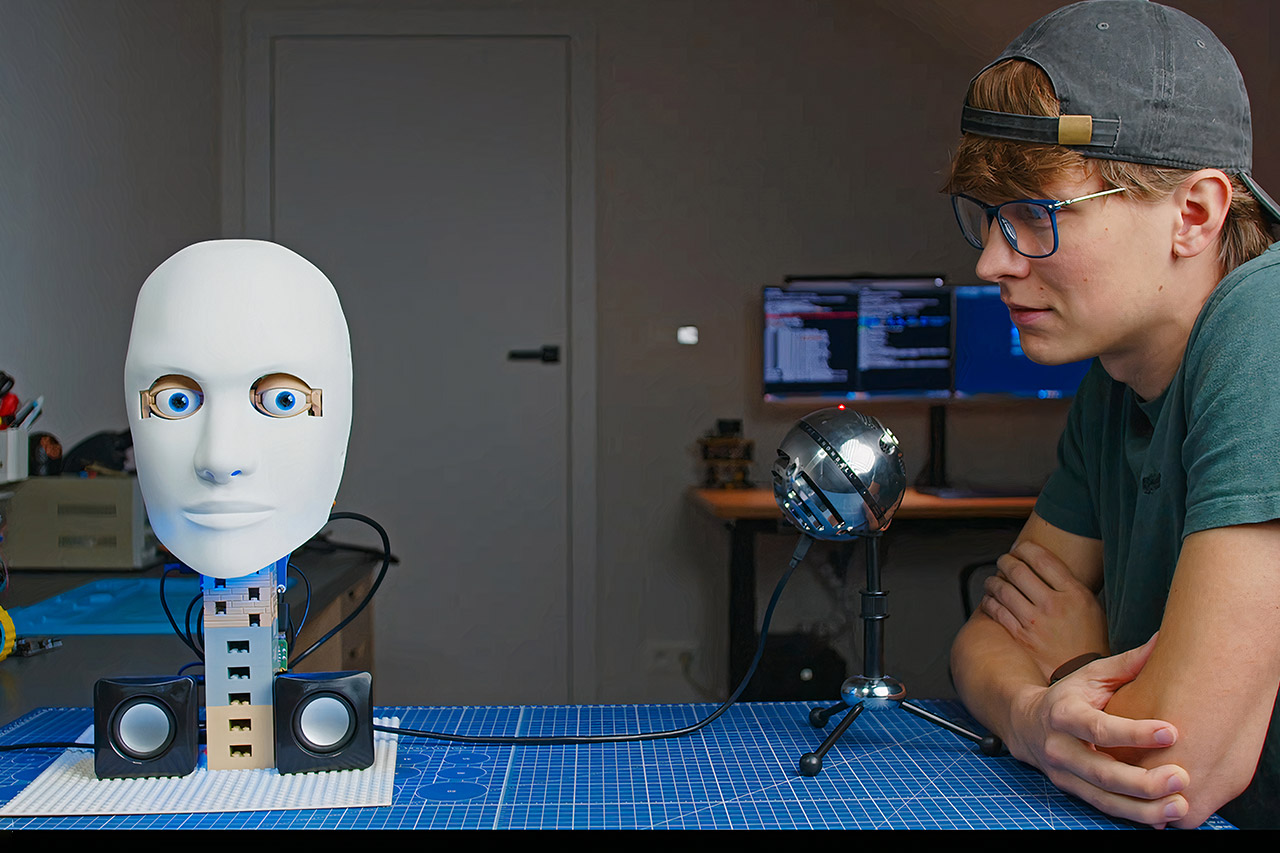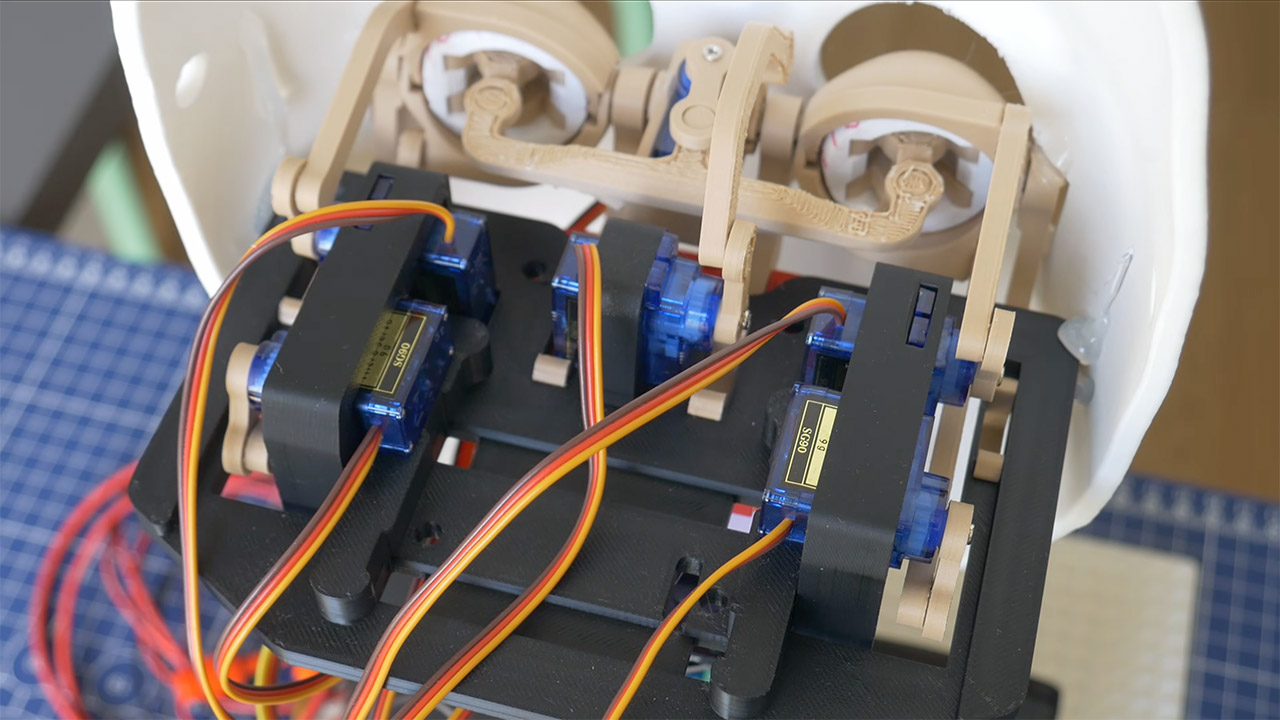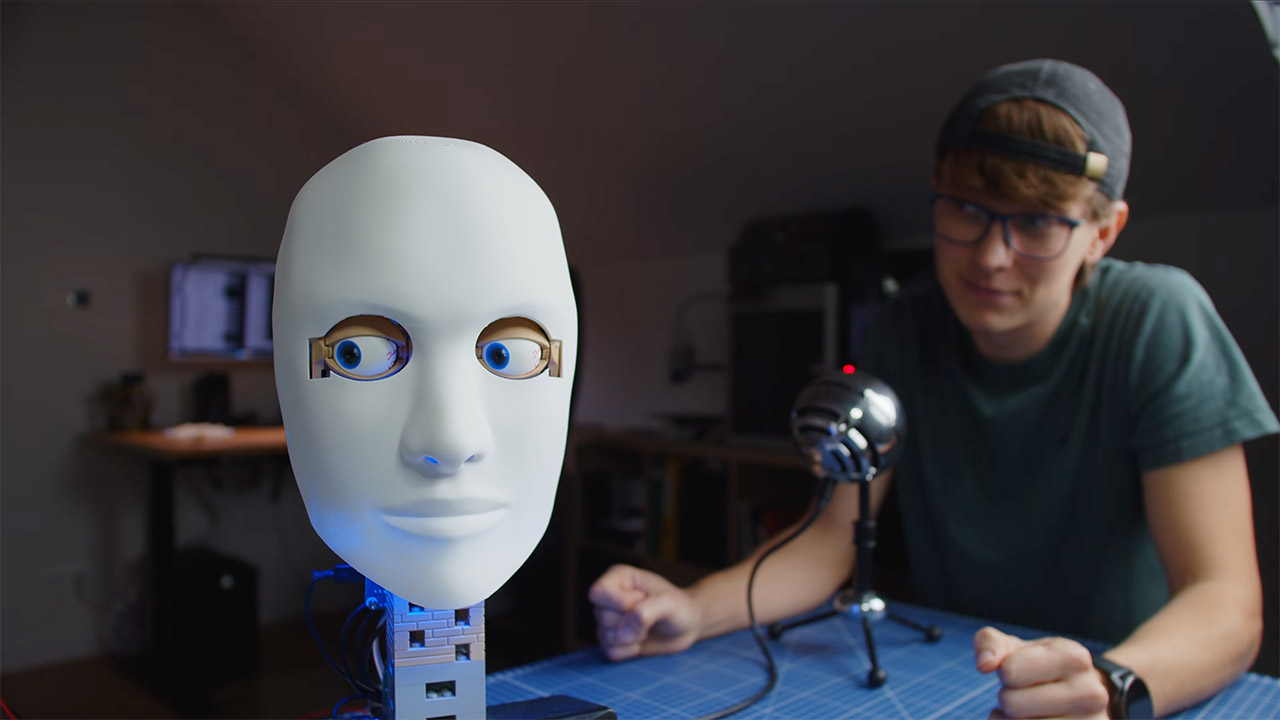
Maker Nikodem Bartnik has built a robot head that answers questions in a way that’ll make you think a ancient Greek philosopher like Aristotle has just rolled back into the room. A metal mask with 3D-printed moving eyes peeks out from the hood, some sparkly LEDs pulsate behind the mouth and every time he responds, he uses an artificial brain that runs on his own computer in the next room. It all looks so alive and makes for a seriously interesting conversation that could keep going for hours, or so we’d like to think.
Bartnik started off by tossing a quote from Steve Jobs around that he’d been carrying in his head for years. You might remember Jobs being pretty keen on the idea of putting Aristotle inside a computer and then just firing a few questions his way. Bartnik decided to see if that was actually doable, if you could really manage to get all the elements together: the voice, the face and the brain, all working together in one, self-contained package – and he was dead set on running it all from his own machine, so nobody else could pull the strings.
- High-Speed Precision: Experience unparalleled speed and precision with the Bambu Lab A1 Mini 3D Printer. With an impressive acceleration of 10,000...
- Multi-Color Printing with AMS lite: Unlock your creativity with vibrant and multi-colored 3D prints. The Bambu Lab A1 Mini 3D printers make...
- Full-Auto Calibration: Say goodbye to manual calibration hassles. The A1 Mini 3D printer takes care of all the calibration processes automatically,...
Those moving eyes were the work of Will Cogley, a designer who’s made some of his designs for animatronic heads available online. Six tiny motors give the eyeballs a very lifelike wobble as they track whoever is speaking to them. There was some fiddling with a few servos to get them moving smoothly, but apart from that, most of the work was done in about an hour and a half. A Raspberry Pi takes care of sending signals to the motors and keeps the robot looking right at whoever is trying to ask it a question.

Bartnik couldn’t quite bring himself to spend hours sculpting his own face in a 3D design app, so he turned to one of his online finds – a pre-made mask that can be printed on a 3D printer. A bit of tweaking here and there – including a quick cut-out of the eye-sockets, to get the glance of Aristotle just right – and he had himself a mask to work with. Its thin design keeps all the innards nice and out of sight, while still letting a little bit of light through the mouth, giving it that sort of “as if” feel.
The microphone on the Raspberry Pi can pick up what you’re saying, convert it into text and send it all off to Bartnik’s desktop machine via Wi-Fi. Then, using a bit of open-source software, his computer uses the Raspberry Pi’s audio input, effectively talking to the Google ‘Gemman 3’ model – which acts out some serious Greek philosopher logic – and tells the computer what to say back. The response then gets piped off to ElevenLabs, where a voice that’s almost as good as a real person does its best to make it sound like the robot is actually Plato coming to life. All that, then gets broadcast out the speakers, hidden inside the mask.

Bartnik had in mind to use some sort of small display to show off a moving waveform, but the screen he found was not usable, so he replaced it with a simple ring of programmable LEDs. This sits behind the mouth of the robot and flashes a bit as each sentence is delivered. At first, he’d planned to get a moving waveform on a tiny screen, but the screen was so bad, even the makers would have given up on it. He got a cheap ring of programmable lights, and routed the control signal to the Raspberry Pi Pico, and now, the lights flash and fade in time with each sentence.
Bartnik feels that running it all from his own machine is the way to go because cloud-based hosting services might be faster, but they cost more and also block certain things. On his own graphics card, the model can find a way to respond to anything – from deep and profound ancient philosophy to dark jokes about global takeovers. He’s shown the full range of his creation – from giving a nice calm lecture on the meaning of life, and the importance of reason and virtue – to producing a sly and ruthless gloating explanation of how it would take over the world.

Bartnik also built a simple web page on his own home computer, which lets him switch up the robot’s personality at the drop of a hat – one minute it’s an ancient Greek scholar, the next it’s a random guy just grouching about life – the hardware is always the same, but the instructions are totally different.
The whole thing has a bit of a DIY prototype feel to it – you can see all the breadboard wires poking out all over the place, LEGO bricks holding components together, and the mask just kinda sits on a wooden board. But none of that really matters till you catch the robots eye and its starts talking. You get a few seconds between questions and answers – long enough to be a bit noticeable but short enough that it feels like its coming from a real person.

He put all the scripts and files up on GitHub so anyone with a printer and a spare computer can knock up their own version. Its taken him weeks of messing around with libraries, reconnecting cables, and rewriting code just to get it all working properly. Now his finished head just sits on his desk waiting for the next question.
[Source]










